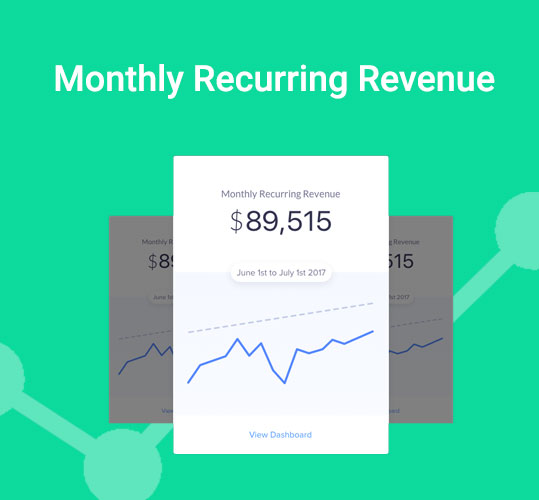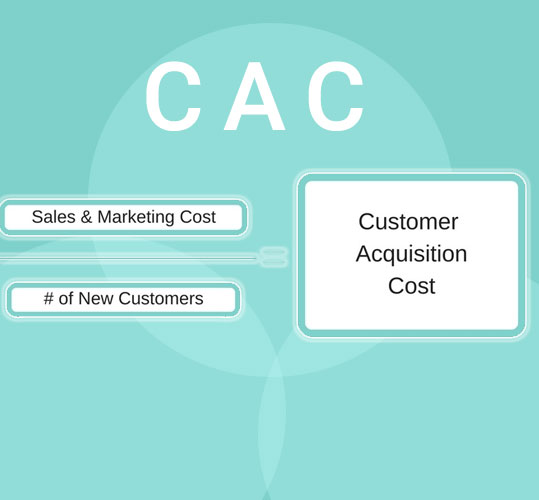Heard about the SaaS business model? Whether you have just started with an ecommerce business or you have been there for a while, you must be surely aware of the term. In this blog, we will be discussing everything a business owner must know about the SaaS business model they have been using or are willing to use for their ecommerce website, or most essentially, ecommerce website.
What is the SaaS business model and why is it important?
A SaaS business model (Software as a Service Business Model) is a model in wherein customers subscribe to a plan to get the license of centrally hosted, cloud-based software. Any organization that uses such a central system to lease their software can be termed as a SaaS-based organization. Here, the organization holds the complete responsibility of the database, data, servers, and all other software that gives access to their products or services. The subscription plans offered may vary from organizations to organizations. Some SaaS-based organizations use a business model that includes offers such as multiple apps integrated along with their product within different subscription plans.
In this business model, companies or organizations do not need to purchase hardware; instead, they opt for the Software as a Service business model by choosing a suitable subscription plan. The model involves a monthly or yearly subscription where recurring payment is to be done during the selected intervals. The company delivers the service based on the subscription amount paid by the customer. Although customer retention is essential for any business, it becomes extremely important for SaaS-based companies as the subscription amount paid cannot be considered as the revenue of the company. The reason being, customers can demand a refund of their subscription amount if you have failed to meet their service expectations. For instance, if a customer pays a subscription amount for a year and is dissatisfied with your services within two months, they have the choice to get back their money. If a company has great customer retention, they can very well boost its revenue.
In order to maintain high customer retention, frequent and smaller updates are a must. Vulnerabilities in software can risk confidential customer data; therefore, it becomes essential for SaaS companies to constantly update their software service. Releasing new features and updates regularly helps SaaS-based companies to keep their software service away from hackers while helping them secure the service.
What are the Metrics to be considered in the SaaS Business Model?
Data is the power of all the SaaS-based companies. The success of a SaaS-based business model depends on the metrics you consider to improve your services. Here are some of the key business metrics that potentially determine the health of a SaaS-based ecommerce business:
MRR

MRR if referred to the Monthly Recurring Revenue is the core of any SaaS-based business. It is the total revenue expected by a company or organization every month. Not many businesses are well-educated of the importance of MRR due to which they provide faulty expense reports. Although a company might not need to report to the government officials, the MRR is essential metrics that impact the decision making of the investors to know the health of a company.
ARR
Similar to MRR, ARR implies to Annual Recurring Revenue. It is again the core of every SaaS-based ecommerce business. ARR is the total revenue expected by a company or organization every year. Although lesser known by many business owners, it is one of the most important metrics for a SaaS business model. No company needs to report the government officials about their ARR. However, business investors consider ARR to be one of the important factors to decide whether they should invest in any particular company.
Churn Rate

Churn Rate refers to the rate at which customers leave acquiring a company’s services in a given period. It is the least desired yet essential metrics in the SaaS-based business model. No companies offering any kind of services want their customers to stop using it or to leave them dissatisfied. Even a small hike in the churn rate can bring a large impact on SaaS-based companies’ success as well as growth.
Retention Rate
The foundation of SaaS-based companies’ growth lies in their retention rates. The retention rate and the churn rate are adverse. While a company needs an extremely low churn rate, the retention rate must be exceptionally high as compared to other businesses. The retention rate, as mentioned earlier is the rate at which a company retains its existing customers in order to earn revenue.
LTV
Lifetime Value or LTV is referred to as the total amount a company should be receiving from a certain customer over the total period of them availing the services. LTV again is one of the most essential metrics required in a SaaS-based ecommerce business. Moreover, the company must calculate the LTV in the right way. Although retention rate numbers are important, it has some loopholes in providing a company with the exact amount any particular customer is bringing per month. Also, retention rate, lack in estimating the success or failure of your upselling strategy which is otherwise achieved with the right use of LTV.
CAC

CAC or Customer Acquisition Cost is another most essential metrics of the SaaS-based ecommerce business. It is defined as the total cost acquired for selling and marketing for one customer. It comes without saying that acquiring new customers need investment in the first place. Also, it takes a good amount of time to negate the cost of acquiring a new customer to the MRR or ARR. Every SaaS-based business must make sure to keep an eye on the CAC in order to outdo its value than their LTV. However, spending lower-than-required amount in CAC can adversely affect a company’s business growth as well as the opportunity to boost revenue from new customers. Creating the right balance between not spending too much and not spending too low can help in achieving the desired business growth and success.
Making the right use of all these essential metrics can do a major role in building the business revenue using the SaaS business model. There are many ways a company can go wrong while using these metrics. Therefore, knowing these metrics may be insufficient; using them the right way matters, especially for the ecommerce website.
Benefits of Using the SaaS-based Business Model in an Ecommerce Website
The benefits of using the SaaS-business model can possibly be never-ending. It is one of the highest-valued among all other business models. Following are a few selected perks of using the SaaS business model in an ecommerce solution:
- The company can offer out-of-the-box solutions such as ready-to-use customizable themes and templates, multiple selling options, management of product information, marketing facilities, and so on which is otherwise not offered in the regular business models. With the help of such features, any online seller is now able to create an online ecommerce website or store and sell efficiently without being a technical expert. For instance, Builderfly Ecommerce Platform offers its customers with a completely customizable online store as well as iOS and Android mobile applications.
- One of the considerable benefits of using the SaaS business model in an ecommerce website is that companies can offer easy backend management of the website or store from a single platform like the one by Builderfly. There is absolutely no requirement to find a hosting service, maintaining service for your store. Any SaaS-based ecommerce company can help you maintain uptime, fix bugs, update software, as well as boost your store or website performance. Moreover, SaaS-based companies are known for a quick and responsive support team. No expert team is required to manage the store when using the SaaS-based ecommerce service.
- With the increasing cut-throat competition in the ecommerce market, scaling to the top of the search result becomes essential. This process becomes convenient and quick with the use of SaaS-based business model. The flexibility offered by ecommerce companies with a SaaS-based business model helps in adding functionalities as and when required. For instance, adding sales channels, increasing bandwidth, adding mobile apps, and so on. You do not need to change the entire website when updating your services when using the SaaS business model.
- Ecommerce websites need to be PCI compliant in order to secure their customers’ payment information. If you use the SaaS-based business model or you avail services of a SaaS-based ecommerce service, you can be assured that your website is PCI complied. When customers get the assurance of the security in their payment information, eventuality their trust is built with the company that leads to increased sales and business revenue.
SaaS business model can require minimal upfront charges, development costs, customization costs, and so on. The reason being, ecommerce platforms using the SaaS business model comes with so many built-in facilities that you do not need to spend money on them. All you do is pay a certain service charge and customize it the way you like. Also, you have options to avail further functionalities in the form of add ons. Moreover, there is no requirement of paying maintenance charges of your website. The SaaS-based ecommerce company is responsible for it.







